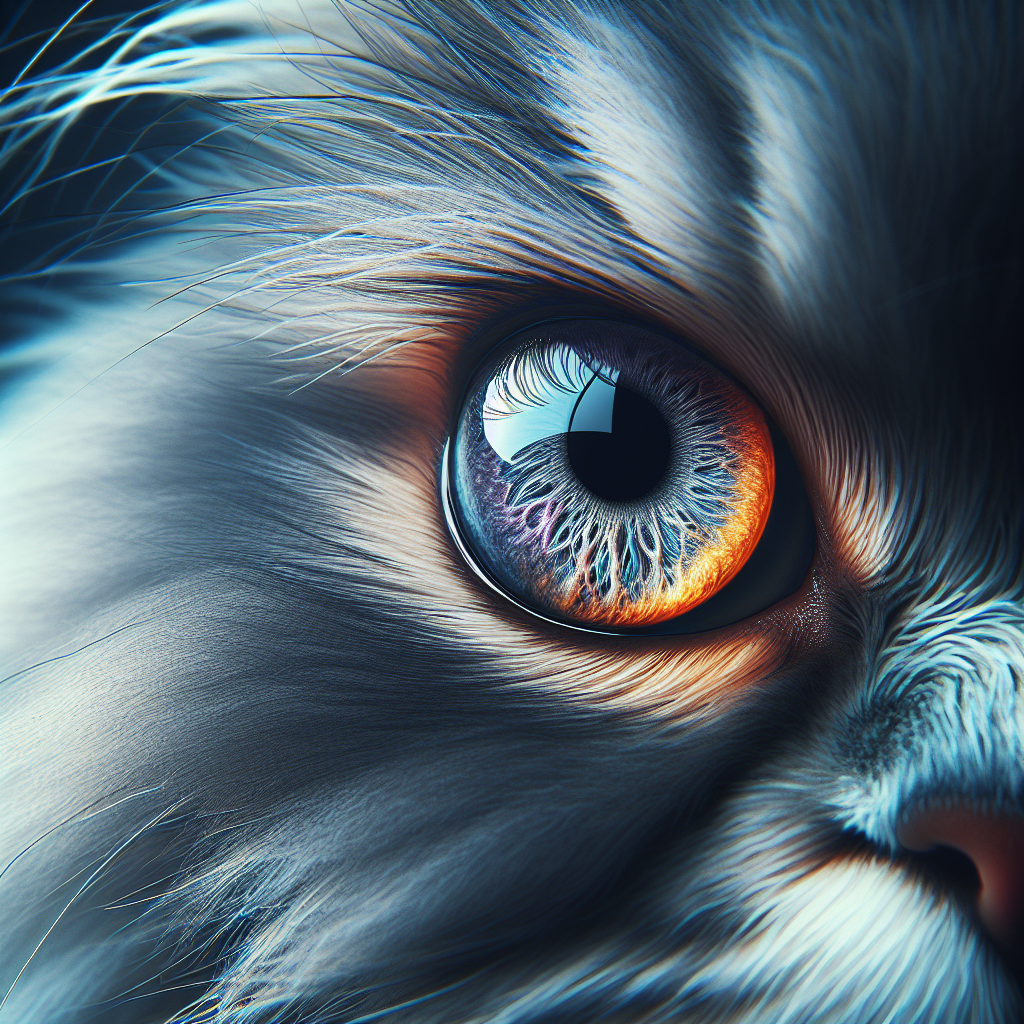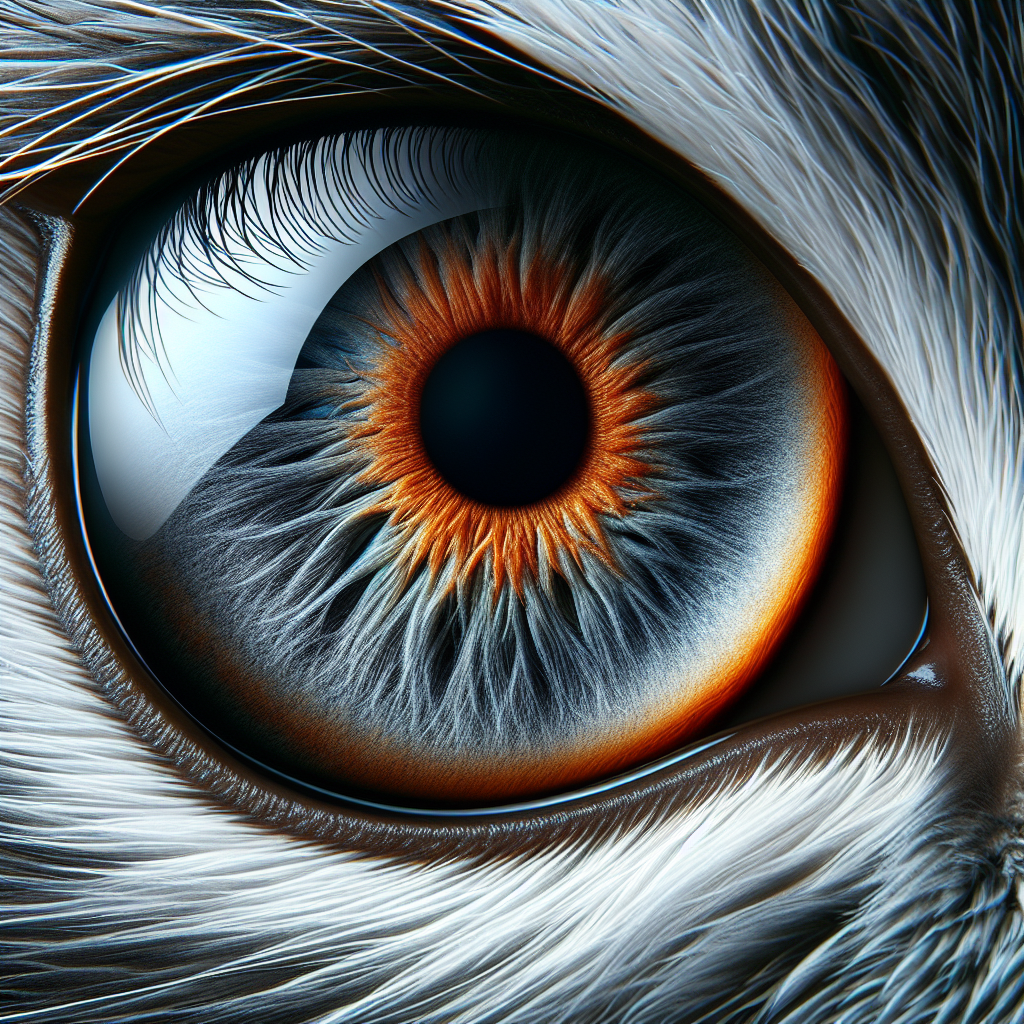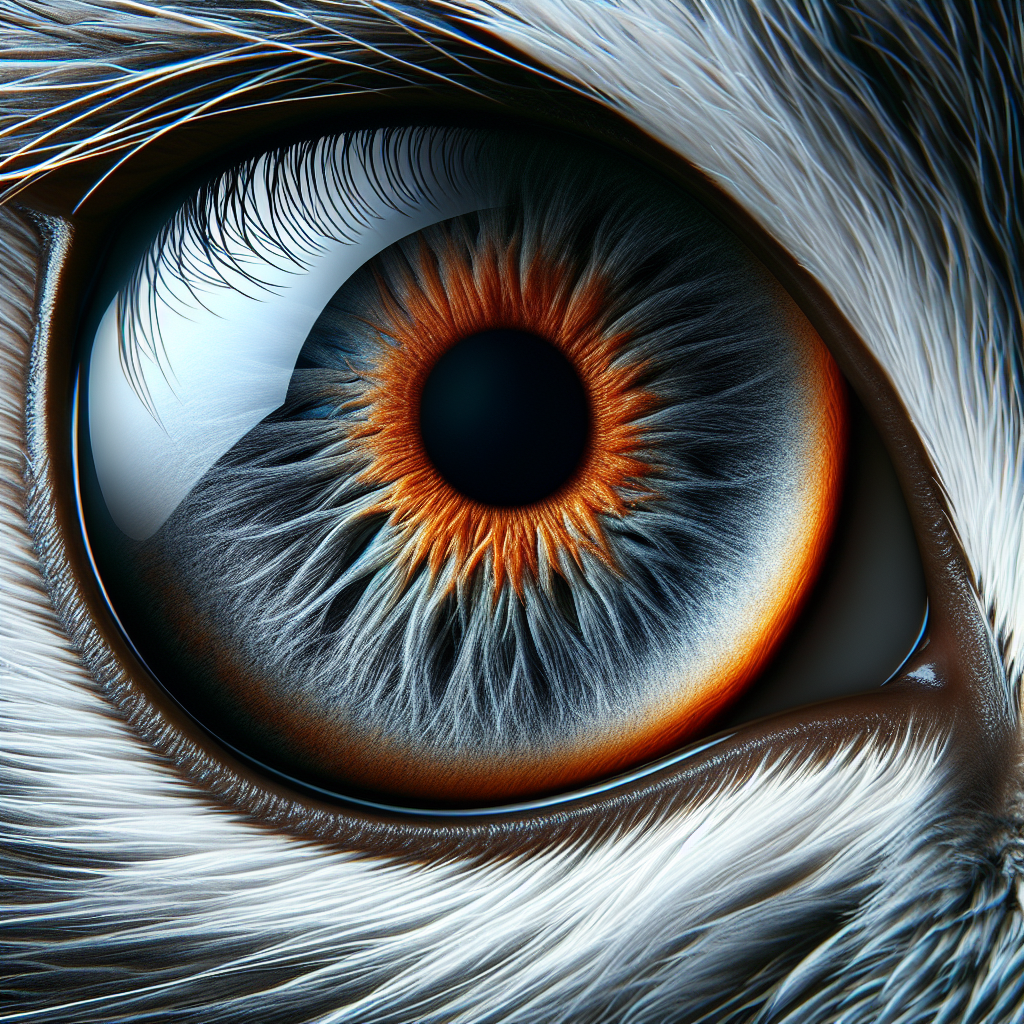If you’re a proud owner of a Persian cat, then you know just how stunning their gorgeous, expressive eyes can be. However, keeping those captivating eyes clean requires a bit of extra care. In this article, you’ll discover some helpful tips and tricks for ensuring that your Persian cat’s eyes remain bright, healthy, and free from any irritating debris. From regular grooming routines to gentle cleaning methods, we’ve got you covered to ensure your furry friend’s eyes remain as clear and beautiful as ever.
Regular Eye Cleanings
Regular eye cleanings are essential for maintaining the health and hygiene of your Persian cat’s eyes. By incorporating this simple routine into your regular care regimen, you can prevent various eye problems and ensure your furry friend’s eyes remain bright and clear. Here are a few steps to help you properly clean your cat’s eyes:
Gather the necessary supplies
Before you begin the cleaning process, it’s important to gather all the necessary supplies. You will need a clean towel or a soft cloth, cotton balls or gauze pads, and a recommended eye cleaning solution. It’s crucial to choose products that are specifically formulated for cleaning cat’s eyes and are approved by veterinarians.
Choose an appropriate cleaning solution
When selecting an eye cleaning solution for your Persian cat, it’s important to choose one that is gentle, non-irritating, and free from harsh chemicals. Look for solutions that are specifically designed for cats and approved by veterinarians. Avoid using regular water, saline solution, or any other human eye cleansers, as they can cause discomfort or further irritation to your cat’s eyes.
Be gentle and patient during the process
Cleaning your Persian cat’s eyes requires a gentle touch and patience. Start by moistening a cotton ball or gauze pad with the recommended eye cleaning solution. Gently wipe the corners of your cat’s eyes to remove any debris, discharge, or tear stains. Be careful not to touch the eyeball or apply any excessive pressure that may cause discomfort. If your cat is not comfortable with the process, try to calm them down with soothing words and treats.
Preventing Eye Discharge
Preventing eye discharge in Persian cats is crucial to maintaining their eye health. Excessive or persistent eye discharge can be a sign of underlying issues such as infections, allergies, or blocked tear ducts. Follow these preventive measures to keep your cat’s eyes free from discharge:
Keep the cat’s face clean
Regularly cleaning your Persian cat’s face can significantly reduce the occurrence of eye discharge. Use a soft, damp cloth or pet wipes to gently wipe their face, focusing on the areas around the eyes. This will help remove any dirt, dust, or debris that can contribute to eye discharge.
Avoid irritants in the environment
Make sure your cat’s living environment is free from potential irritants that can cause eye discharge. This includes keeping their bedding clean, avoiding the use of strong cleaning chemicals, and minimizing exposure to smoke or other airborne pollutants.
Ensure proper grooming and hygiene
Regular grooming is essential to prevent eye discharge in Persian cats. Pay particular attention to the fur around their eyes, as it can trap dirt and bacteria, leading to discharge. Consider trimming the hair around their eyes to reduce the risk of irritation. Additionally, maintaining good overall hygiene, such as keeping their litter box clean and providing regular baths, can help prevent eye discharge.

Handling Tear Stains
Tear stains can be a common issue for Persian cats and can give the appearance of dark streaks or discoloration under their eyes. While tear stains are not typically harmful, they can be unsightly and indicate potential issues. Here’s how you can handle tear stains effectively:
Identify the cause of tear stains
Before addressing tear stains, it’s essential to identify the underlying cause. Tear stains can be attributed to factors such as excessive tearing, blocked tear ducts, allergies, or eye infections. Observing your cat’s behavior and consulting with a veterinarian can help determine the cause and guide appropriate treatment.
Clean tear stains regularly
Regularly cleaning tear stains can help prevent their buildup and keep your Persian cat’s face looking clean and healthy. Use a gentle pet-safe tear stain remover or a recommended homemade solution such as a mixture of hydrogen peroxide and cornstarch. Apply the solution to a clean cloth or cotton pad and gently wipe the tear stains, being careful not to get it into your cat’s eyes. Repeat this process daily or as instructed by your veterinarian.
Consult a veterinarian if tear stains persist
If tear stains persist or worsen despite your efforts, it’s important to consult a veterinarian. They can assess your cat’s overall health, perform diagnostic tests if necessary, and provide appropriate advice or treatment options to address the underlying cause of the tear stains. Remember, professional guidance is crucial to ensure the well-being of your Persian cat.
Dealing with Eye Infections
Eye infections can occur in Persian cats due to various factors, such as bacteria, viruses, allergies, or injury. Prompt and appropriate treatment is essential to prevent complications and preserve your cat’s vision. Here’s what you need to know about dealing with eye infections:
Recognize the signs of an eye infection
Being able to recognize the signs of an eye infection is crucial in providing timely care for your Persian cat. Look out for symptoms such as redness, swelling, excessive tearing, discharge, squinting, cloudiness, or changes in behavior. If you notice any of these signs, it’s important to seek veterinary assistance.
Seek veterinary assistance for diagnosis and treatment
When dealing with an eye infection, it’s important to seek veterinary assistance for an accurate diagnosis and appropriate treatment. Your veterinarian will perform a thorough examination of your cat’s eyes, potentially collect samples for testing, and prescribe the necessary medications, such as antibiotic eye drops or ointments, to combat the infection.
Administer medication as prescribed
Proper administration of medication is vital in treating eye infections effectively. Follow your veterinarian’s instructions carefully and ensure that you administer the prescribed medications as directed. Use a gentle hand and be patient when applying eye drops or ointments, ensuring that the medication directly reaches the affected area. If you encounter any difficulties or your cat displays discomfort, consult your veterinarian for further guidance.

Protecting Eyes from Injury
Protecting your Persian cat’s eyes from injury is crucial to maintain their overall eye health and prevent potential vision problems. By taking preventive measures, you can reduce the risk of eye injuries in your feline friend. Here’s how you can protect your cat’s eyes:
Create a safe living environment for your cat
Ensuring a safe living environment is essential in preventing eye injuries. Examine your home for potential hazards such as sharp edges, open windows, or unstable objects that may pose a risk to your cat’s eyes. Keep potentially harmful chemicals, cleaning supplies, or plants out of your cat’s reach to prevent accidental exposure.
Secure household objects and cords
Household objects, such as wires, cords, or blinds, can pose a hazard if not properly secured. Make sure to tie up or conceal loose wires and cords to prevent your cat from getting entangled. Additionally, securing blinds or curtains with cord safety devices can help prevent accidental strangulation.
Use protective measures during play
When engaging in playtime with your Persian cat, it’s important to use appropriate protective measures to prevent eye injuries. Avoid using toys with sharp edges or small parts that can easily be swallowed. Opt for safe, soft toys or interactive play that keeps your cat engaged without risking eye injuries.
Importance of Diet and Nutrition
Proper diet and nutrition play a significant role in maintaining your Persian cat’s eye health. A well-balanced and nutritious diet, along with adequate hydration, can promote overall eye health and prevent certain eye conditions. Consider the following factors for your cat’s diet:
Provide a balanced and nutritious diet
Feeding your Persian cat a balanced and nutritious diet is essential for their overall well-being, including their eye health. Choose high-quality cat food that contains essential nutrients, such as vitamin A, omega-3 fatty acids, antioxidants, and taurine. These nutrients support eye health and can help prevent issues like dry eyes or vision problems.
Ensure adequate water intake
Proper hydration is crucial for maintaining your cat’s overall health, including their eye health. Make sure your Persian cat has access to fresh and clean water at all times. Inadequate water intake can lead to dehydration, which can affect tear production and potentially cause dry eyes.
Consider supplements for eye health
In addition to a balanced diet, certain supplements can support your Persian cat’s eye health. Consult with your veterinarian to determine if your cat would benefit from supplements such as fish oil or specialized eye health supplements. Remember to follow the recommended dosage guidelines and seek professional advice before introducing any supplements.
Maintaining a Clean Living Area
Maintaining a clean living area is essential for promoting good eye health in your Persian cat. A clean environment can prevent the buildup of dust, allergens, or irritants that can contribute to eye problems. Here are some tips for maintaining a clean living area:
Regularly clean and vacuum the house
Regular cleaning and vacuuming help eliminate dust, pollen, and other allergens that can irritate your cat’s eyes. Pay particular attention to areas where your cat spends most of their time, such as their sleeping areas, scratching posts, or window sills. Use pet-friendly cleaning products and avoid strong chemicals that can potentially harm your cat.
Keep litter boxes clean and odor-free
Maintaining clean and odor-free litter boxes is crucial for preventing eye infections or irritations. Scoop the litter box daily, remove any soiled litter promptly, and consider using litter liners or an automatic litter box system to minimize contact with waste materials. Additionally, choose unscented litter to avoid potential eye irritations caused by strong fragrances.
Minimize the presence of dust and allergens
Reducing the presence of dust and allergens in your home can help prevent eye problems in your Persian cat. Regularly dust surfaces, wash bedding, and avoid using strong air fresheners or perfumes. Consider using air purifiers or opening windows for proper ventilation to minimize the buildup of allergens.
Regular Veterinary Check-ups
Regular veterinary check-ups are vital in maintaining your Persian cat’s eye health and overall well-being. Through routine examinations, your veterinarian can detect potential eye problems early on and provide appropriate care. Follow these steps for regular veterinary check-ups:
Schedule routine check-ups
Make sure to schedule regular check-ups with your veterinarian, as recommended based on your cat’s age and health condition. During these visits, your veterinarian will perform a comprehensive examination, including an assessment of your cat’s eyes. Routine check-ups help identify any underlying issues and allow for timely intervention.
Discuss eye health with the veterinarian
During veterinary visits, don’t forget to discuss your Persian cat’s eye health. Inform your veterinarian about any observed changes or concerns regarding your cat’s eyes, such as excessive tearing, redness, or cloudiness. This will provide valuable information to help in the diagnosis and treatment of potential eye problems.
Follow recommended vaccinations and treatments
Maintaining proper vaccinations and treatments recommended by your veterinarian is crucial to prevent infectious diseases that can impact your cat’s eye health. Stay up to date with vaccination schedules and follow the recommended preventive treatments for flea and tick control. This will help safeguard your cat’s overall health and minimize the risk of eye infections.
Keeping Stress Levels Low
Keeping your Persian cat’s stress levels low is vital for their overall well-being, including their eye health. Cats are sensitive creatures, and excessive stress can contribute to various health issues, including eye problems. Here’s how you can minimize stress for your cat:
Create a calm and comfortable environment
Providing a calm and comfortable environment for your Persian cat is crucial in reducing stress. Create a designated area where your cat feels safe and secure, complete with cozy bedding, hiding spots, and toys to keep them entertained. Minimize loud noises, sudden changes, or stressful situations to promote a relaxing atmosphere.
Provide mental and physical stimulation
Engaging your Persian cat in regular mental and physical activities can help alleviate stress and keep their mind stimulated. Provide interactive toys, puzzle feeders, or enrichment activities that encourage exercise and mental engagement. Play with your cat regularly to provide an outlet for their energy and to strengthen the bond between you.
Avoid sudden changes and disturbances
Cats thrive on routine and familiarity. Avoid sudden changes in their environment, such as rearranging furniture or introducing new pets, as these can cause stress. If changes are necessary, try to gradually introduce them and provide your cat with ample time to adjust. Minimize disturbances from outside sources, such as loud noises or unfamiliar visitors, to create a calm and stress-free atmosphere for your feline companion.
Signs of Eye Problems to Watch Out For
Being vigilant and proactive in detecting signs of eye problems is essential for maintaining your Persian cat’s eye health. Early detection allows for timely intervention and better treatment outcomes. Keep an eye out for the following signs:
Excessive tearing or discharge
If you notice excessive tearing or a noticeable increase in eye discharge, it may indicate an underlying issue. While some tearing is normal, persistent or abnormal tear production should be monitored and addressed promptly.
Squinting or pawing at the eyes
Squinting or pawing at the eyes can be an indication of pain or discomfort. If you observe your Persian cat exhibiting these behaviors, it’s important to seek veterinary attention to determine the cause and provide appropriate treatment.
Redness, swelling, or cloudiness
Redness, swelling, or cloudiness in your cat’s eyes may be signs of inflammation, infection, or other underlying issues. Monitor your cat’s eyes regularly and consult your veterinarian if you notice any concerning changes in their appearance.
Remember, early intervention is crucial when it comes to your Persian cat’s eye health. If you notice any signs or symptoms that are concerning or persist despite your efforts, don’t hesitate to seek veterinary assistance. By incorporating regular eye cleanings, preventive measures, and maintaining a healthy lifestyle, you can help ensure your Persian cat has bright, clear, and healthy eyes for years to come.

